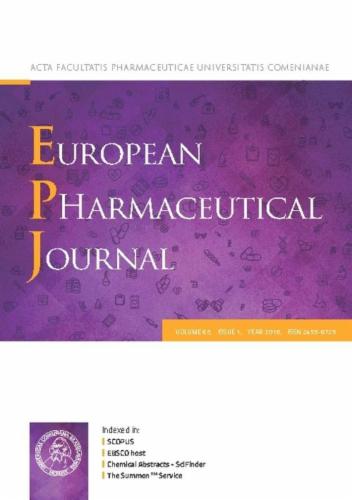Electrospun poly(ester-carbonate)/poly(carbonate-urethane) membranes with controlled drug release for potential use in abdominal surgery
IF 4.7
3区 医学
Q1 PHARMACOLOGY & PHARMACY
引用次数: 0
Abstract
Surgical meshes and patches used in abdominal surgery, despite their effectiveness, have a number of disadvantages that may lead to complications. This is due to the properties of the materials used for their construction and the structure of the implant itself. This paper presents an attempt to obtain an implant material, that could be used in surgery, combining the advantages of biodegradable and non-degradable polymers, while eliminating their weaknesses, additionally providing the possibility of using local pharmacotherapy. For this purpose a poly(caprolactone-co-trimethylene carbonate) blend with a 10% addition of poly(ε-caprolactone) (PCLTMC:PCL) was utilized as a biodegradable drug carrier. Using a dual-jet electrospinning method, the blend was interlaced with non-degradable poly(carbonate-urethane) (PCU) nanofibers of varying hydrophilicity, forming semi-fibrous membranes. The primary aim of the research was to obtain control over drugs release kinetics simultaneously maintaining stable mechanical properties of membranes during incubation in vitro. These objectives were achieved through the use of a specific gradient structure design, enriched with a drug-releasing fraction at the surface and PCU in the core. It was observed that the hydrophilicity of membranes influenced the mechanisms and rate of the diffusion of water to the bulk and the drugs along with degradation by-products to the incubation medium. Additionally, the gradient structure enabled control over the permeation of low-molecular-weight model compound from one side of the membrane to the other. The results also demonstrated that the number of fibroblasts adsorbed on the membrane surface depended primarily on its morphology and hydrophilicity, suggesting the potential to achieve favourable integration with tissues. The developed material exhibits significant potential for applications in abdominal surgery.

可控制药物释放的电纺丝聚(酯-碳酸酯)/聚(碳酸酯-聚氨酯)膜在腹部手术中的潜在应用
手术网片和贴片用于腹部手术,尽管它们很有效,但也有一些可能导致并发症的缺点。这是由于用于其构建的材料的特性和植入物本身的结构。本文提出了一种可以用于手术的植入材料的尝试,结合了生物可降解和不可降解聚合物的优点,同时消除了它们的缺点,另外还提供了使用局部药物治疗的可能性。为此,采用添加10%聚(ε-己内酯)(PCLTMC:PCL)的聚(己内酯-共三亚甲基碳酸酯)共混物作为可生物降解的药物载体。采用双射流静电纺丝方法,将共混物与不同亲水性的不可降解聚碳酸酯-聚氨酯(PCU)纳米纤维相互交织,形成半纤维膜。本研究的主要目的是在体外培养过程中控制药物释放动力学,同时保持膜的稳定力学性能。这些目标是通过使用特定的梯度结构设计来实现的,在表面富集药物释放部分,在核心富集PCU。观察到膜的亲水性影响了水向体扩散的机制和速率,并影响了降解副产物向培养液的扩散。此外,梯度结构能够控制低分子量模型化合物从膜的一侧渗透到另一侧。结果还表明,成纤维细胞吸附在膜表面的数量主要取决于其形态和亲水性,这表明成纤维细胞有可能与组织形成良好的结合。所开发的材料在腹部手术中具有重要的应用潜力。
本文章由计算机程序翻译,如有差异,请以英文原文为准。
求助全文
约1分钟内获得全文
求助全文
来源期刊
CiteScore
9.60
自引率
2.20%
发文量
248
审稿时长
50 days
期刊介绍:
The journal publishes research articles, review articles and scientific commentaries on all aspects of the pharmaceutical sciences with emphasis on conceptual novelty and scientific quality. The Editors welcome articles in this multidisciplinary field, with a focus on topics relevant for drug discovery and development.
More specifically, the Journal publishes reports on medicinal chemistry, pharmacology, drug absorption and metabolism, pharmacokinetics and pharmacodynamics, pharmaceutical and biomedical analysis, drug delivery (including gene delivery), drug targeting, pharmaceutical technology, pharmaceutical biotechnology and clinical drug evaluation. The journal will typically not give priority to manuscripts focusing primarily on organic synthesis, natural products, adaptation of analytical approaches, or discussions pertaining to drug policy making.
Scientific commentaries and review articles are generally by invitation only or by consent of the Editors. Proceedings of scientific meetings may be published as special issues or supplements to the Journal.

 求助内容:
求助内容: 应助结果提醒方式:
应助结果提醒方式:


